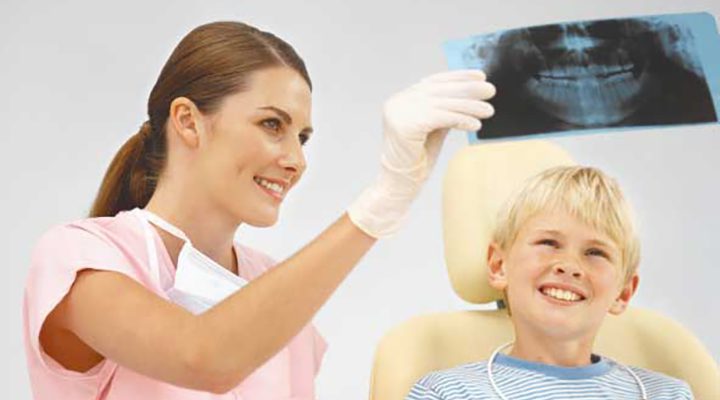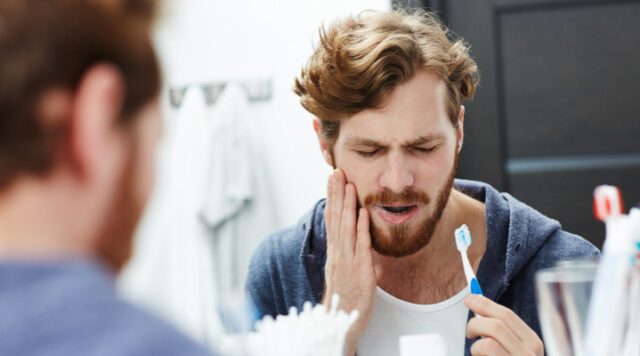X-ray Exposure: Advice for the Dental Chair

X-ray vision lets Superman see through walls and your dentist see through bone. This superpower can be a powerful tool, allowing professionals to treat problems before they get bigger. But when should you limit exposure to X-rays?
Tips for Kids
X-rays use radiation that can damage DNA. That damage accumulates over your lifetime, making children more susceptible to effects. The risk from a necessary X-ray is small compared to its benefits in diagnosis and treatment, but unnecessary exposure has a high cost with little or no benefit. X-rays should be used with the “as low as reasonably achievable” principle.
Recommendations from the American Dental Association and U.S. Food and Drug Administration include:
• Kids Need an Exam and Consent First
Before an X-ray is performed on a child, the dental professional should complete an exam and receive consent from the parent or guardian.
• First Time Visit, X-rays Possible
For baby teeth (kids age 1-5), if there are no spaces between teeth, bitewing X-rays may be necessary to see these surfaces. For front teeth, X-rays may be recommended.
• New Dentist Visit, X-rays Possible
For children with a mix of primary and permanent teeth or only permanent teeth, X-rays may be recommended when seeing a new dentist. These can include bitewing, periapical, panoramic, or full mouth survey X-rays. Full-mouth surveys should only be needed if the child has evidence of disease or a history of extensive dental treatment.
• Low Risk for Decay, 1-3 Years Between X-rays
For children or adolescents with a mix of primary and permanent teeth and low risk for tooth decay , 12- to 36-month intervals are recommended between bitewing X-rays. For higher-risk children or adolescents, 6- to 18-month intervals are recommended.
• X-rays on Wisdom Teeth Recommended
X-rays are recommended for checking on third-molar (wisdom-tooth) development in 16-19-year-old children. This can be done with either individual periapical X-rays or a single panoramic X-ray of all the teeth and supporting structures.
Tips for Adults
Concerns about radiation exposure are greater for younger patients because they are more sensitive to radiation and they have a longer lifetime for ill effects to develop. Adult exposures also should be limited.
Remember, there are no recommendations for “routine” X-rays. Your individual need should be determined after your dentist has completed an exam and verified your risk level. Some situations may require more frequent use of dental X-rays including monitoring teeth with large restorations, crowns or root canals, or for patients that have a history of periodontal disease.
Recommendations are often contingent on the risk of decay. To assess your needs or the needs of your child, take our online assessment now. If you have questions or concerns, discuss them with your dentist.
Related stories
-
Create Smile-Worthy Memories with Delta Dental of Wisconsin’s Starting Lineup
PLUS: High-Five Milwaukee Bucks Players Basketball season is here, and we want to help you smile on … Read More
-
How to Handle Dental Emergencies During COVID-19
Just like any other part of the body, mouths are subject to accidents. Sometimes the injury can … Read More
-
Women’s Oral Health Timeline [INFOGRAPHIC]
Throughout womanhood, you may experience a number of hormonal changes—many of which can lead to an increased … Read More
Sign Up Now
Most Liked
- 1 Do Expiration Dates on Dental Products Matter? 305 Likes
- 2 Is Activated Charcoal Safe for your Smile? 166 Likes
- 3 Crazy and Cool Fish Teeth Facts 91 Likes
- 4 Delta Dental Protects Your Eyes with DeltaVision® Coverage 70 Likes
- 5 The In-between Tooth: Guide to Bicuspids 53 Likes
- 6 Recipe: Quick Pumpkin Pudding 49 Likes
- 7 Bad Taste After Brushing? Common Explanations 44 Likes
- 8 People with Dental Benefits are Healthier 39 Likes
- 9 Own Your Oral Health: Subscribe now for tips to ensure a bright smile 38 Likes
- 10 Signs of diabetic eye problems 36 Likes




